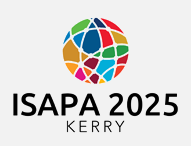Start Date
18-6-2025 9:00 AM
End Date
18-6-2025 10:30 AM
Abstract
Numerous studies, mainly in the US, have shown a delay in the onset of fundamental motor skills (FMS) in youth with visual impairment (VI). In Switzerland, approximately 1,600 school-age children are affected by VI. They can attend either inclusive or special schools governed by a global curriculum that provides national guidelines for different domains. However, for Physical Education (PE), the curriculum does not clearly specify the objectives nor the necessary adaptations. In addition, the absence of an Adapted Physical Educator and the lack of training in standardized assessment creates a lack of uniformity in practice, as well as a wide latitude for PE teachers regarding the objectives to be achieved and adaptations required. As a result, students with VI could physically participate in PE classes, but do not receive an initial assessment of their FMS, nor an individualized education plan considered non-mandatory for PE. An analysis of the Swiss school system identified a major gap, which we tried to fill with this pilot project aimed at assessing the FMS of youth people with VI.
Methodology: Participants (n=15, mean age= 13) were recruited from a sports camp specializing in VI and evaluated for 3 consecutive years with the Test of Gross Motor Development-III. Results showed little progress over 3 years and significant delays in throwing, catching and running skills. Children's profiles will be presented according to vision level, cognitive ability and school context.
Conclusion These results will provide input to revise the PE curriculum, proposing milestones and accommodations for Special Education.
Recommended Citation
Caron, Valerie Dr; Lieberman, Lauren Dr; and Brian, Ali Dr, "Development of fundamental motor skills of children with visual impairment in Switzerland: One step at a time" (2025). International Symposium of Adapted Physical Activity and International Symposium on Physical Activity and Visual Impairment and Deafblindness. 10.
https://sword.mtu.ie/isapa/2025/day3/10
Development of fundamental motor skills of children with visual impairment in Switzerland: One step at a time
Numerous studies, mainly in the US, have shown a delay in the onset of fundamental motor skills (FMS) in youth with visual impairment (VI). In Switzerland, approximately 1,600 school-age children are affected by VI. They can attend either inclusive or special schools governed by a global curriculum that provides national guidelines for different domains. However, for Physical Education (PE), the curriculum does not clearly specify the objectives nor the necessary adaptations. In addition, the absence of an Adapted Physical Educator and the lack of training in standardized assessment creates a lack of uniformity in practice, as well as a wide latitude for PE teachers regarding the objectives to be achieved and adaptations required. As a result, students with VI could physically participate in PE classes, but do not receive an initial assessment of their FMS, nor an individualized education plan considered non-mandatory for PE. An analysis of the Swiss school system identified a major gap, which we tried to fill with this pilot project aimed at assessing the FMS of youth people with VI.
Methodology: Participants (n=15, mean age= 13) were recruited from a sports camp specializing in VI and evaluated for 3 consecutive years with the Test of Gross Motor Development-III. Results showed little progress over 3 years and significant delays in throwing, catching and running skills. Children's profiles will be presented according to vision level, cognitive ability and school context.
Conclusion These results will provide input to revise the PE curriculum, proposing milestones and accommodations for Special Education.

